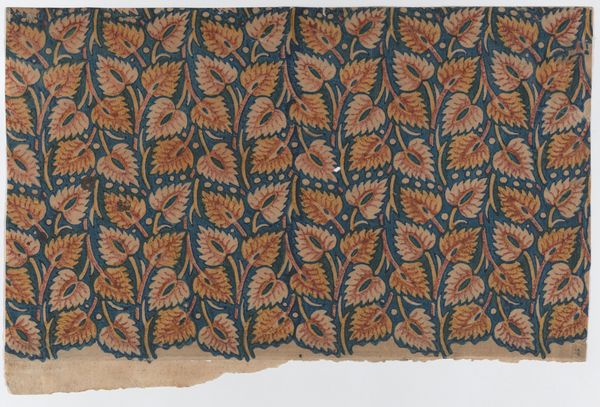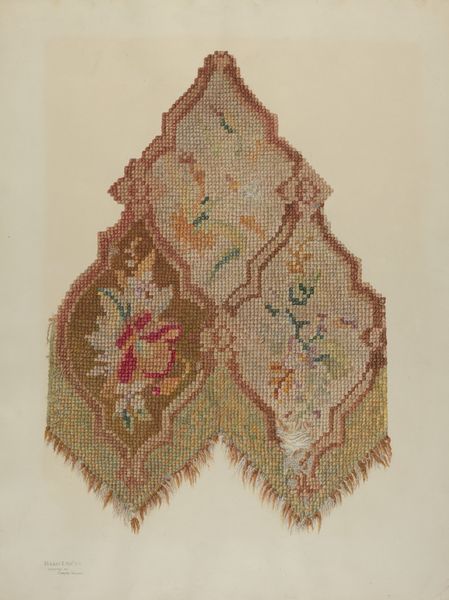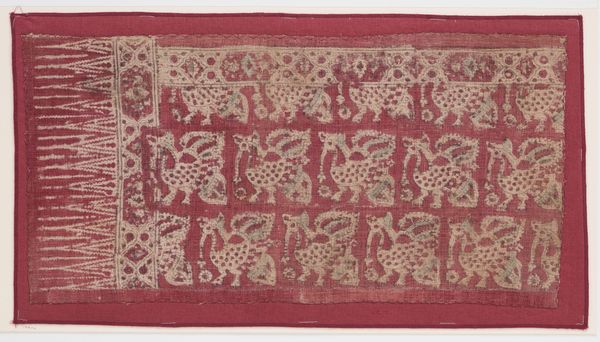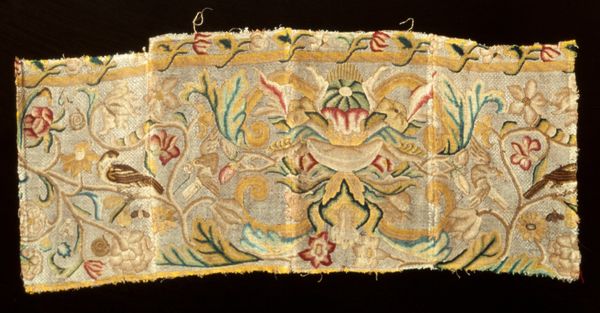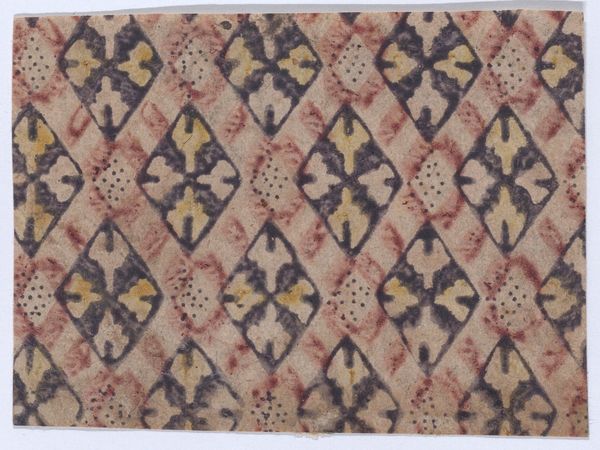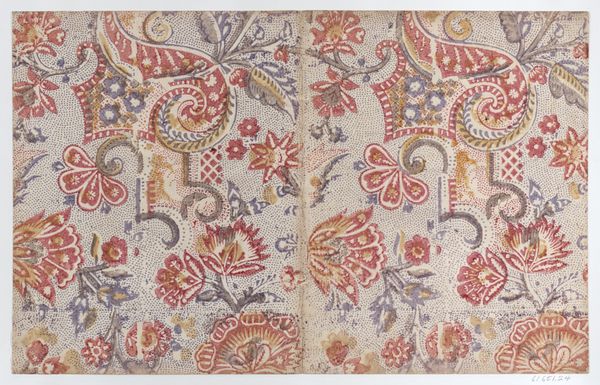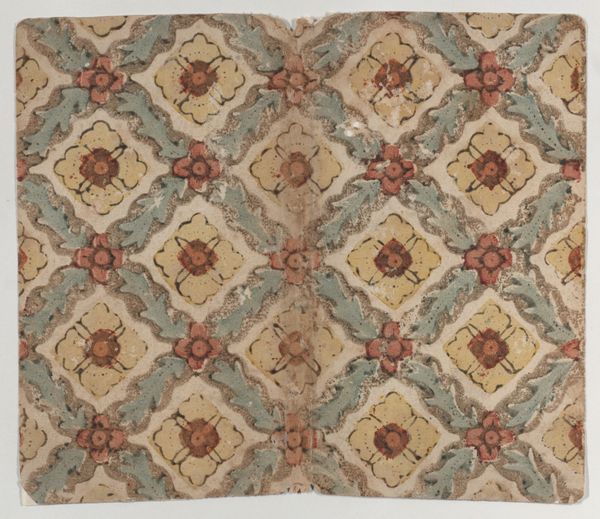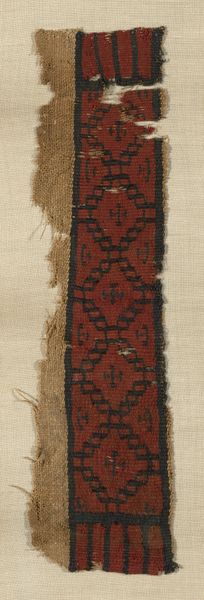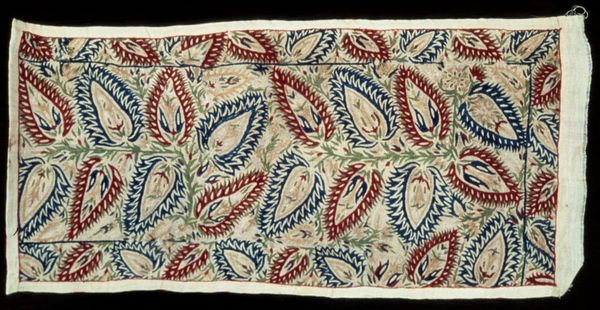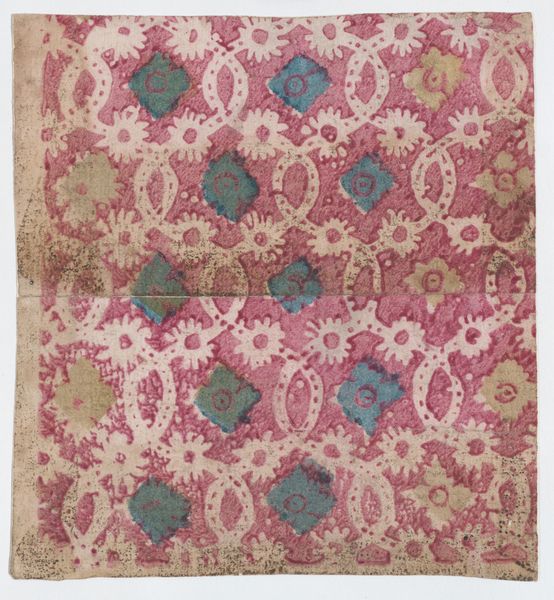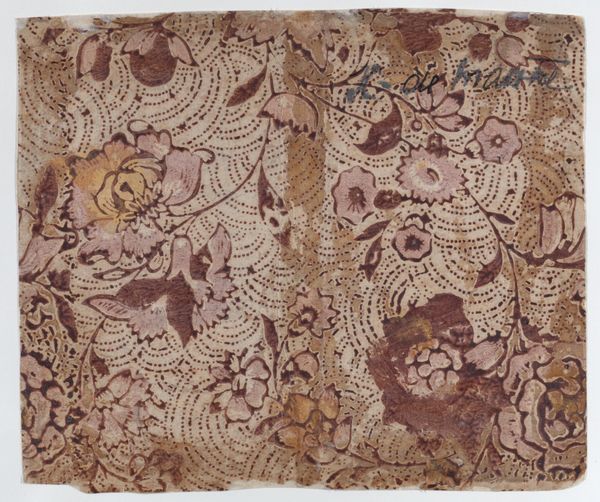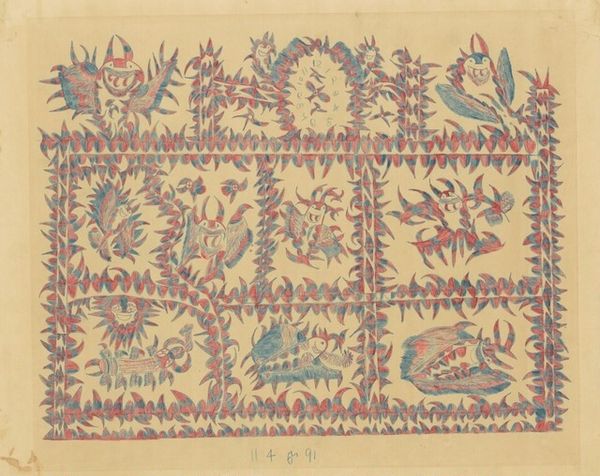
textile
#
textile
#
11_renaissance
#
decorative-art
Dimensions: Overall: 8 3/8 x 5 5/8 in. (21.3 x 14.3 cm)
Copyright: Public Domain
Curator: Look at this "Tapestry Fragment," dated between 1530 and 1570, made by Willem de Pannemaker. You can find it on display here at the Metropolitan Museum of Art. The textile is just a glimpse into the decorative arts of the Renaissance. Editor: Okay, first impression? Faded grandeur. I feel like I've stumbled into a once-opulent room, but all that’s left are scraps of something beautiful that used to be, maybe the hem of a gown, lost petals under a table. It's evocative, definitely speaking to loss and decay. Curator: That sense of "loss" is really interesting. Pannemaker was, during his lifetime, considered among the most accomplished tapestry weavers. Textiles of this period served as potent symbols of status and power, embodying cultural capital through intricate design and expensive materials. A fragment speaks to disrupted hierarchies, social upheaval. Editor: Exactly! This scrap holds echoes. Were these opulent tapestries commissioned by the church or nobility? It speaks volumes about who got to enjoy beauty and who didn't during the Renaissance, who had power and influence. Plus, think of the labor. All those unseen hands. It gives me chills. Curator: I'm glad you brought up labor because we can’t forget to contextualize artistic achievement within systems of exploitation. This textile embodies the complexities of patronage, production, and power relations. Moreover, such items played crucial roles in cultural exchange across continents, becoming interwoven into complex colonial histories and the development of global trade. Editor: Oh, absolutely. Imagine this tapestry fragment resurfacing in a completely different context centuries later – its meaning transforms! Now it might symbolize resistance, survival, or even ironic nostalgia. Curator: It certainly raises compelling questions about artistic interpretation across different eras. Well, I'm really glad we examined that together; this small yet poignant fragment makes one consider broader issues, as we discussed here today. Editor: Indeed, even the smallest fragments hold echoes of larger, more complex stories waiting to be untangled! I'm going to carry those "chills" with me as I view the next exhibit.
Comments
No comments
Be the first to comment and join the conversation on the ultimate creative platform.
